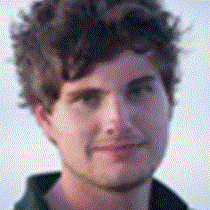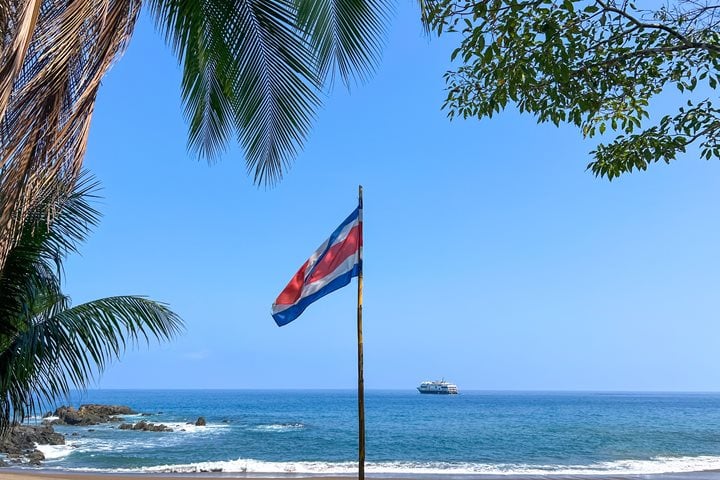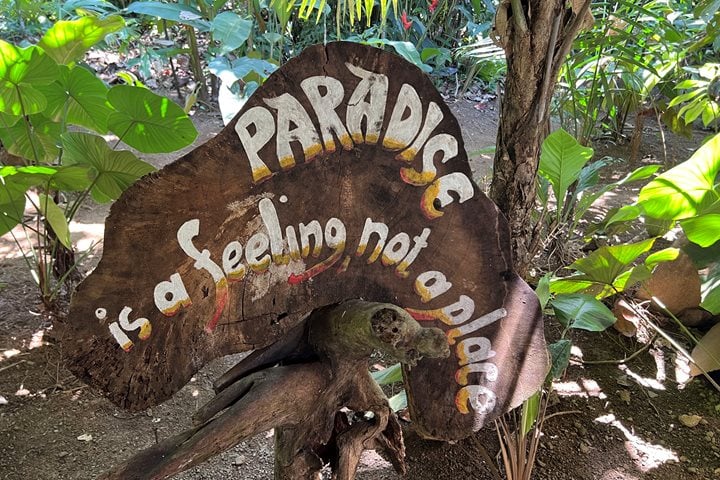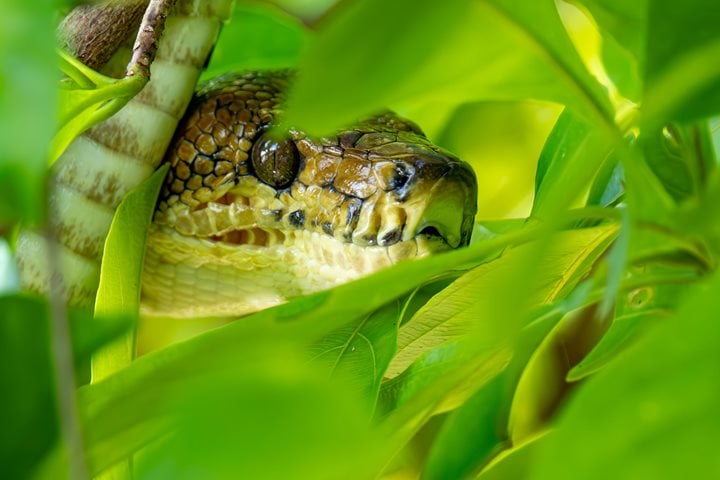After having navigated 120 nautical miles, National Geographic Sea Lion arrived at Panama’s pristine jewel, Coiba Island National Park. As we approached our anchorage for the morning, flocks of brown boobies escorted our vessel. An unspoiled forest was revealed to us while we made our way in the calm waters of this marine park.
The park was created at the beginning of this century and has been protected by law since 2005. It is part of a very important marine corridor that goes from Cocos Island in Costa Rica down to the Galápagos Islands in Ecuador. Being the one of the biggest marine park in the world – with an extension of 669 acres including 126 acres of land – this park has the second largest coral reefs of the tropical eastern Pacific.
Right after breakfast we grabbed our gear and went ashore. The station was settled in a tiny beautiful islet known as Granito de Oro, “Little Grain of Gold.” The white sand, a few palm trees and legions of hermit crabs gave it the resemblance of the island in Gary Larson’s comic “On the Far Side.”
Kayaking and snorkeling were offered to each of our guests. The waters were calm and transparent, making the snorkeling an unforgettable experience. Beds of hard rocky corals, diversities of fishes and sea turtles were some of the sightings. It was just a spectacular morning!
Back on board, while having lunch, National Geographic Sea Lion repositioned in front of the former prison camp of Coiba Island. Before being declared a national park, Coiba Island, with an extension of around 190 square miles, gathered the worst of the criminals of Panama between the years of 1913 and 2005. It had a total of 23 prison camps with an average of 100 prisoners per camp.
We went ashore to visit the former prison that today is no longer in use. Members of the marine service and police of Panama welcomed us and escorted us along the different installations of the prison. After exploring the premises of the prison, we understood the reason why this place has been preserved; it has an impressive pristine forest with several endemic species of mammals and birds.
After completing our exploration, we returned to the ship and started on our way to our next destination. A pod of pantropical spotted dolphins escorted our ship, giving us the thank-you and farewell. It has been a wonderful day. Tomorrow…. The Panama Canal!









